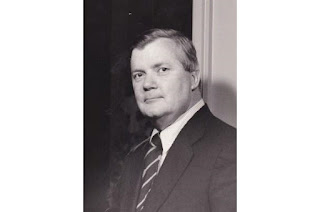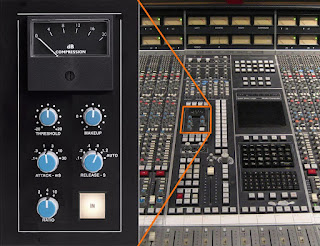In the world of professional audio, few names resonate with the same reverence as David Blackmer (he's the DB in DBX). An engineer, inventor, and relentless pursuer of sonic excellence, Blackmer’s contributions have left an indelible mark on music production and recording. From founding DBX to pioneering groundbreaking technologies like the Blackmer Gain Cell, DBX noise reduction, and iconic compressor/limiter hardware, his legacy continues to shape the sound of modern music. This tribute celebrates Blackmer’s remarkable career, his innovative creations, and the enduring impact of his work.
 |
| David Blackmer |
Born on January 11, 1927, in Wilton, New Hampshire, David Blackmer’s fascination with electronics began at a young age. By age 10, he was already a radio-building hobbyist, a passion that foreshadowed his future as an audio pioneer. His early career took him to Boston’s Lafayette Radio in the 1940s, where, as a stockboy, he stunned colleagues by repairing radios deemed unfixable. Blackmer’s technical prowess grew through his Navy training in radar electronics and studies at Harvard and MIT. His diverse experiences, including designing telemetry systems for the Mercury space program at Raytheon, honed his engineering skills and prepared him for a transformative career in audio.
In 1971, Blackmer founded DBX, driven by a singular mission: “To get closer to the realism of a live performance.” At the time, analog tape recording suffered from limited dynamic range, introducing noise and distortion that compromised sound quality. Blackmer’s solution was the DBX noise reduction system, a revolutionary approach that used linear decibel companding—compressing the signal during recording and expanding it on playback. This technique preserved the dynamic range of performances, reducing tape hiss and making recordings sound closer to the original source.
 |
| Simultaneous Stereo Encode/Decode Noise Reduction |
The DBX Type I and Type II noise reduction systems became industry staples, particularly in professional studios. Type I was designed for high-quality recording media, while Type II catered to noisier formats like cassettes. The systems also found use in vinyl records (DBX discs) and even television, with DBX-TV integrated into the MTS system for stereo analog broadcasts. Though it competed with Dolby NR, DBX’s noise reduction earned a dedicated following for its ability to deliver cleaner, more dynamic recordings.
The Blackmer Gain Cell: A Game-Changer for VCA Technology
Perhaps Blackmer’s most enduring contribution to audio engineering is the Blackmer Gain Cell, a voltage-controlled amplifier (VCA) that redefined professional audio processing. Developed in 1971 and patented in 1973, the Blackmer Gain Cell was the first VCA precise enough for professional use, offering a 110 dB control range with total harmonic distortion as low as 0.01%. Unlike earlier VCAs used in analog synthesizers, Blackmer’s design minimized noise and distortion, making it ideal for studio applications.
The original DBX 202 “Black Can” VCA, built with hand-matched discrete transistors baked in an oven for thermal consistency, was a marvel of its time. Despite its noise and distortion compared to modern standards, it outperformed contemporary VCAs and became a cornerstone of early automated mixing consoles by manufacturers like MCI and SSL. Over time, the Blackmer Gain Cell evolved, with the 202C “Gold Can” and later monolithic ICs like the DBX 2150 improving performance and affordability. Today, descendants of the Blackmer Gain Cell, such as THAT Corporation’s 2180/2181 ICs, remain integral to VCA-based compressors, expanders, and mixing consoles worldwide.
DBX 160: The Compressor That Defined a Generation
In 1976, DBX introduced the DBX 160 compressor/limiter, a device that would become a studio legend. Built around the Blackmer Gain Cell and a sophisticated RMS detector, the 160 offered smooth, transparent gain reduction thanks to its feed-forward design and decilinear VCA. Unlike traditional compressors, the 160’s fast attack and nonlinear response allowed it to tame transients without excessive distortion or oscillation, making it a favorite for drums, bass, and vocals.
The DBX 160 VU model introduced “OverEasy” compression, a soft-knee characteristic that gently engaged gain reduction as the signal approached the threshold, resulting in a more natural sound. Later models, like the DBX 165, added features like stereo linking and sidechain access, further expanding its versatility. Engineers like Eddie Kramer and Mike Clink praised the 160 for its clean, predictable response and lightning-fast attack, which could “fatten” transient-heavy sounds like snares or acoustic guitars. Even today, the 160’s distinctive character is emulated in plugins like the UAD-2 DBX 160, cementing its status as a classic.
 |
| 80-8 with integral DBX N.R. unit |
BSR and Beyond: DBX’s Evolution
In 1979, DBX was acquired by Birmingham Sound Reproducers (BSR), marking a new chapter for the company. Under BSR, the DBX brand expanded into consumer audio, producing speakers, turntables, and amplifiers. While these products broadened the brand’s reach, Blackmer remained focused on professional audio innovation. He stayed with DBX for several years before founding Earthworks Audio in the late 1980s, where he developed high-performance microphones, preamps, and reference monitors that pushed the boundaries of audio fidelity.
 |
| SSL Bus Comp which uses DBX VCA's |
After BSR, DBX’s professional products division was sold to Orban AKG and later acquired by Harman International, a subsidiary of Samsung Electronics. The OEM business, including key VCA patents, was transferred to THAT Corporation, founded by former DBX engineers. Despite these transitions, DBX’s core technologies—rooted in Blackmer’s innovations—continued to thrive in professional audio.
Other Ventures and a Broader Legacy
Beyond DBX, Blackmer’s entrepreneurial spirit led him to found Kintek (now Colortek) and Instrumentation Laboratory, and even run a restaurant, Cafe Pierrot, in Wilton. His work at Earthworks explored ultrasonic frequencies, challenging the conventional 20 kHz limit of human hearing. Blackmer argued that time resolution as fine as 5 microseconds (corresponding to 200 kHz) was perceptible, advocating for audio equipment with extended frequency response. His research influenced high-resolution audio design and remains a topic of debate among audiophiles.
A life member of the IEEE and a fellow of the Audio Engineering Society, Blackmer’s contributions were recognized for their technical and artistic impact. His 37 patents, spanning noise reduction, VCAs, and beyond, reflect a career dedicated to pushing the limits of what audio technology could achieve.
The Enduring Impact of David Blackmer
David Blackmer passed away on March 21, 2002, at his home in Wilton, New Hampshire, leaving behind a legacy that continues to inspire audio professionals. His inventions—the DBX noise reduction system, the Blackmer Gain Cell, and the DBX 160 compressor—transformed recording studios, live sound, and broadcast environments. From the analog consoles of the 1970s to the digital plugins of today, Blackmer’s innovations remain a cornerstone of audio engineering.
EPILOGUE
For music producers, engineers, and enthusiasts, Blackmer’s work is a reminder of the power of innovation to bridge the gap between technology and artistry. His quest for sonic realism not only shaped the tools we use but also elevated the way we experience music. As we crank up a DBX 160 on a bass track or marvel at the clarity of a modern VCA compressor, we owe a nod to David Blackmer—a true pioneer whose vision still resonates in every note we hear.
Thank you for reading High on Technology, Good Music To You!
©July 2025 by Mark King, it is NOT ok to copy or quote without written permission from the author.
Go forth and create something beautiful…… . . . .



